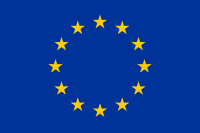8 Impact Areas
Explore the eight impact areas of digital cultural participation
This area of impact regards the ways in which digital can foster the gathering of a group around a cultural asset and can provide space and tools for its maintenance and sustainment, giving life to what we can call Digital Heritage Communities. As we have already seen, a significant effect of active cultural participation in the digital sphere has to do with social cohesion, and this is true also for the digital communities and their important internal relations, which is of special relevance in terms of human development. When it comes to culture, online participation that is based on a virtual aggregation of people, that is built and that lives for feeding and enrich a specific digital heritage or asset (such as a movie, an event, or a specific issue such as feminism or social justice in the creative industry), deserves to be considered and protected in the light of the guidelines promulgated by the Faro Convention. The Faro Convention indeed, introduced an innovative concept, consistent with the New European Agenda for Culture, which promotes a broader understanding of heritage, placing people and communities at the centre, and involving them in making decisions about heritage valorisation. Cultural heritage acquires the meaning of the common good, which expresses collective identity and values shared by the heritage community, and of the process activated to enhance it. It is important to consider online cultural communities as digital heritage communities because it is fundamental to consider the powerful impact that this can have not only on empowering them through and toward their cultural mission, but also on entitling them to co-manage and co-curate their asset, the digital cultural common good. This is especially effective when digital participation works as an ally of physical experience and interacts with community empowerment, as an antidote to social isolation and helplessness. Indeed, a culture-led rethinking of public spaces can also be a key strategy for a collective re-purposing of meaningful urban spaces as suggested by the guidelines of the New European Bauhaus, an initiative inviting us to reshape our lifestyle and future in alignment with challenges such as accessibility, inclusion and sustainability. This is supported by the power of the digital in creating communities and managing the commons, as demonstrated for instance by the “social streets'' phenomenon and related programmes of community-based actions of space re-appropriations against neo-liberal shaping of cities as forms of social justice civic movements




